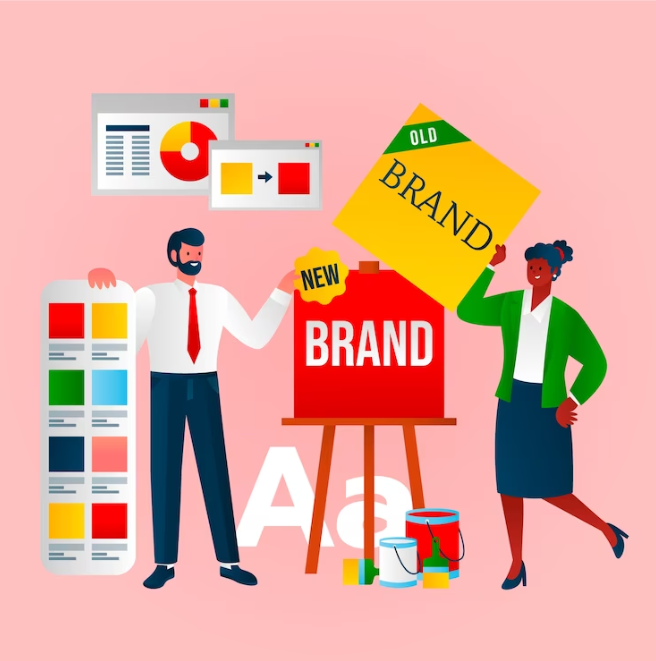In today's dynamic professional landscape, resilience isn't just a desirable trait—it's a necessity. While traditional views on resilience center around bouncing back from adversity, an innovative perspective integrates personal branding into the resilience toolkit. At first glance, resilience and personal branding may seem unrelated. Yet, when explored from an employee-centric viewpoint, the connection becomes clear: your personal brand can be a protective shield and a springboard, buffering you against challenges and propelling you forward.
1. Understanding the IntersectionResilience is about adaptability and recovery, while personal branding is about crafting a consistent, authentic representation of yourself. Merging the two means leveraging your unique strengths and values, ensuring you not only withstand professional storms but also emerge stronger and more defined.
2. Crafting AuthenticityIn the age of digital footprints, authenticity is paramount. A personal brand built on genuine strengths, passions, and values inherently boosts resilience. When challenges arise, you're not just defending a façade; you're standing up for your authentic self.
Employee Insight: Reflect on your core strengths and passions. Ensure your personal branding efforts—be it on LinkedIn, personal blogs, or within office interactions—resonate with this genuine self.
3. Consistency as a BufferConsistency in your personal brand creates trust, and this trust acts as a buffer during challenging times. When setbacks occur, the consistent image you've built reassures colleagues, superiors, and clients of your capabilities.
Employee Insight: Regularly update your professional profiles, engage in conversations true to your brand, and ensure all communications align with the image you wish to project.
4. Networking: Building Resilient BondsA robust personal brand fosters networking opportunities. By building meaningful professional relationships, you inherently craft a support system, invaluable during trying times.
Employee Insight: Attend industry events, webinars, and workshops. Engage with peers authentically, letting your personal brand shine. The connections you make can be your resilience anchors in turbulent times.
5. Continuous Learning and GrowthA dynamic personal brand—one that reflects growth and adaptability—bolsters resilience. By showcasing your commitment to learning and evolution, you signal your ability to navigate and adapt to change.
Employee Insight: Dedicate time for upskilling. Whether through online courses, reading, or workshops, ensure your personal brand reflects a commitment to continuous growth.
6. Celebrating Wins, Big and SmallYour personal brand isn't just about showcasing skills and experiences—it's also about celebrating victories. By recognizing and sharing achievements, you build a reservoir of positive reinforcement, essential for resilience.
Employee Insight: Share milestones on professional platforms. Whether it's a project completion, a new certification, or positive feedback, let your network join in your celebrations.
7. Embracing VulnerabilityCounterintuitive as it may seem, showcasing moments of vulnerability can enhance both resilience and personal branding. It portrays you as relatable, humanizes your brand, and demonstrates your ability to overcome challenges.
Employee Insight: Share stories of challenges faced and how you navigated them. Not only does this offer insights to peers but also reinforces your resilient narrative.
8. Feedback as a Resilience ToolA resilient personal brand is one that's open to feedback. Constructive criticism can refine your brand, ensuring it remains relevant and genuine.
Employee Insight: Actively seek feedback on your professional endeavors. Whether it's a project, presentation, or an article, understanding others' perspectives can fortify both your brand and resilience.
9. Vision: The Resilience CompassYour personal brand should reflect a vision—a direction in which you aim to progress. This vision acts as a compass during challenging times, ensuring you remain on course even when the terrain gets tough.
Employee Insight: Clearly define your professional goals and aspirations. Ensure your personal brand communicates this vision, offering a beacon of guidance during uncertain times.
10. The Power of PositivityInfusing your personal brand with positivity can enhance resilience. A positive outlook, reflected in interactions and communications, can not only uplift your spirits but also those around you, creating a ripple effect of resilience.
Employee Insight: Engage in positive conversations, share uplifting stories, and ensure your personal brand exudes optimism.
In conclusion, managing resilience with personal branding offers a fresh, empowering perspective for today's professionals. By intertwining these concepts, employees can craft a protective, yet dynamic, armor—a personal brand that not only safeguards against challenges but transforms them into opportunities. In a world where change is constant, let your personal brand be both your shield and your catapult, driving resilience in the face of adversity.





